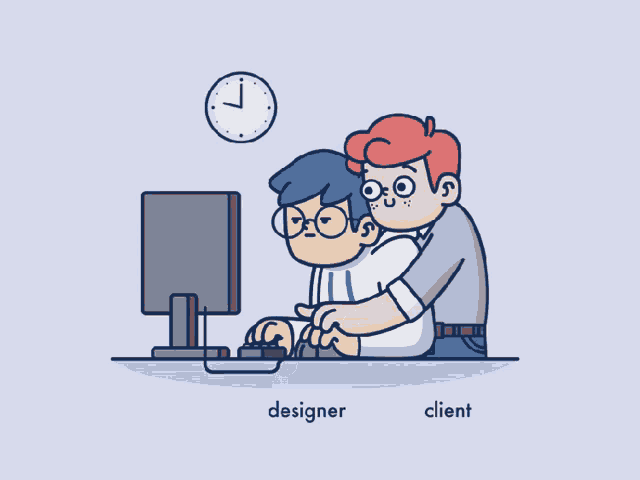What You’ll Learn from This Guide:
👉 How to find out WHAT people will pay for.
👉 How to create simple systems THAT WORK everywhere.
👉 How to get your first PAYING CLIENT.
If it makes sense, keep reading.
“I want to work from a beach in Bali.”
I’ve heard this phrase so many times from corporate burnout victims that I’m starting to wonder if everyone secretly has the same screensaver.
And it’s always with that dreamy emphasis on ANYWHERE. As in, location independence equals ultimate freedom. Going deeper: I can escape this cubicle nightmare and finally live.
The romanticizing continues: “I’ll just freelance, make my own schedule, and travel the world while making six figures from my laptop.”
Aspiring freelancers, we need to talk.
You’re not escaping to paradise—you’re building a business.
You’re not just “going freelance.” You’re becoming the person who can solve specific, high-value problems that keep clients awake at 2am, regardless of which timezone you’re operating from.
But here’s the brutal reality: location independence without a solid foundation is just expensive unemployment with better WiFi.
So let’s strip away the Instagram fantasy and get into what actually works.
1. Stop Romanticizing and Start Reality-Checking Your Freelance Dreams

The Instagram lie is killing your chances before you even start.
Every day, thousands of people quit their jobs inspired by carefully curated posts of “digital nomads” working from hammocks in Bali. What they don’t show you? The 3am client calls, the feast-or-famine income cycles, or the fact that 73% of freelancers struggle with inconsistent revenue in their first year.
Nobody’ll tell you that successful freelancing isn’t about escaping work, but rather about becoming really f-ing good at work that matters.
My friend Sarah spent six months “building her freelance writing business” while traveling through Europe. She made $847 total. Know why? She was so focused on the lifestyle that she forgot to focus on the skill.
The reality check you need: Write down exactly why you want to freelance. If “freedom” or “travel” are your top reasons, you’re setting yourself up to fail. Successful freelancers start with “I solve this specific problem better than anyone else.”
2. Identify Your Core Skill That People Actually Pay For

“I’m good at everything” is the fastest way to be good at nothing profitable.
The biggest mistake wannabe freelancers make is trying to be a Swiss Army knife. They list fifteen services on their website and wonder why nobody hires them. Meanwhile, specialists are charging 3x more for doing one thing exceptionally well.
You can spend months offering “social media, content writing, email marketing, and web design”, getting zero clients. But if you narrow it down to “LinkedIn content strategy for B2B SaaS companies” – you stand a chance.
Here’s your homework: Complete this sentence honestly: “Companies pay me because I’m exceptionally good at _______.” If you can’t finish it in one specific phrase, you’re too broad.
Use the Venn diagram method: Draw three circles. Circle 1: What you’re genuinely skilled at. Circle 2: What people actually pay for. Circle 3: What you enjoy doing.
Your freelance focus lives in the intersection of all three.
Everything else is a distraction.
3. Research Market Demand Before You Quit Your Day Job

Your brilliant idea means nothing if nobody’s willing to pay for it.
According to a 2024 Upwork study, 67% of failed freelancers never validated market demand before launching. They assumed their skills were valuable without asking the most important question: “Are people actively seeking and paying for this solution?”
LinkedIn Sales Navigator becomes your best friend here. Search for your potential clients and see what they’re posting about. What problems keep appearing in their content? What solutions are they actively seeking? This isn’t theory, this is market research that pays.
The validation framework that works: Find 10 potential clients in your target market. Reach out with a simple question: “What’s your biggest challenge with [your area of expertise] right now?” Don’t sell anything. Just listen. If 7 out of 10 mention similar problems, you’ve found your market fit.
Pro tip: Join Facebook groups and Slack communities where your ideal clients hang out. Spend two weeks just observing their conversations. Screenshot the problems they mention repeatedly. Those screenshots are worth more than any business plan.
4. Build Your Safety Net: How Much Money You Really Need

Most freelancers go broke before they go big.
Truth be told, you need 6-12 months of expenses saved, not 3-6 like the generic advice suggests. Why? Because freelance income isn’t linear. You might land a $10K project in month two, then nothing for six weeks.
The real numbers: If your monthly expenses are $3,000, you need minimum $18,000 saved. Sounds like a lot? Good. It should scare you into preparation.
That said, you don’t need to save it all from your current salary. Start freelancing as a side hustle while employed. Every dollar earned freelancing goes straight into your “freedom fund.”
Track this religiously: Fixed expenses (rent, insurance, groceries) versus variable expenses (entertainment, travel, impulse purchases). When you freelance full-time, fixed expenses don’t disappear—but variable ones can be temporarily eliminated.
If losing your job tomorrow would create panic, you’re not ready to quit. When losing your job feels like an inconvenience rather than a catastrophe, you’ve built enough runway.
5. Create Your Freelance Business Foundation (Legal, Financial, Admin)

The unsexy stuff that separates professionals from amateurs.
You can’t just wake up one day and declare yourself a freelancer. Well, you can, but you’ll get destroyed by taxes, liability issues, and complete disorganization within six months.
Start with business structure. LLC or sole proprietorship? Most freelancers benefit from an LLC—it protects your personal assets and looks more credible to enterprise clients. File it yourself through your state’s website (usually $50-200) or use LegalZoom if you prefer hand-holding.
Your financial stack: Separate business checking account (non-negotiable), accounting software like QuickBooks or FreshBooks, and invoice management system. Stripe and Square handle payments seamlessly.
Contract templates matter more than your website. Use tools like Honeybook or PandaDoc for professional agreements that protect your ass when clients inevitably try to expand scope without expanding payment.
Set these up before your first client: Basic bookkeeping system, contract templates, and project management tool (Asana, Monday, or Notion work perfectly – yes they have free plans!).
Time invested here saves months of headaches later.
6. Develop Your Signature Service Offering
Here’s what I learned after watching hundreds of freelancers struggle: package beats hourly, every single time.
Hourly billing caps your income at your available hours. Packages price your expertise, not your time. When you sell “LinkedIn content strategy audit + 30-day implementation plan” for $3,500, clients know exactly what they’re getting and you’re not nickel-and-diming every phone call.
The signature service formula: One core outcome + your unique methodology + clear deliverables + defined timeline. Example: “90-day email list growth system that doubles your subscribers using my CONVERT framework.”
Your signature service should pass this test: A stranger should understand exactly what they get, how long it takes, and what outcome to expect within 30 seconds of reading your description.
Stop selling your time. Start selling your transformation.
Package it, price it, perfect it.
7. Price Your Services Like a Professional, Not a Desperate Beginner

$15 per hour.
That’s what Jake quoted his first client for web design work. Six months later, he was working 70-hour weeks and couldn’t afford rent. Meanwhile, his competitor down the street charged $150 per hour for identical work and had a waiting list.
The difference wasn’t skill. It was mindset.
Your pricing reflects your perceived value, not your actual worth. When you charge bottom-dollar rates, clients assume you deliver bottom-dollar results. It’s psychology, not economics.
Research your competition ruthlessly. Check Glassdoor, Upwork, and industry reports. If the average freelance marketing consultant charges $75-125/hour in your area, don’t price yourself at $25 thinking you’ll get more clients. You’ll get worse clients who haggle over every invoice.
Start at 80% of market rate to build confidence and testimonials. Every successful project completion, raise your rates by 20%. Within six months, you should be at or above market rate.
Remember: expensive problems require expensive solutions.
Position yourself accordingly.
Use Remployee’s Freelance Rate Caltulator 👈🏽
8. Build Your Online Presence That Actually Converts
Nobody cares about your beautiful website if it doesn’t make your phone ring.
I’ve seen freelancers spend $5,000 on gorgeous websites that generate zero leads. Know what generates leads? Clear messaging about the specific problem you solve for specific people.
Your website needs exactly three things:
What you do (in one sentence). Who you do it for (be specific). How to hire you (make it brain-dead simple).
Everything else is noise.
LinkedIn matters more than your website anyway. 89% of B2B buyers use LinkedIn during their research process. Post consistently about your area of expertise. Share client wins. Engage genuinely with your ideal clients’ content.
The content rule: 80% valuable insights, 20% promotional. Give away your best thinking freely. Worried about competitors stealing your ideas? Good. That means your ideas are worth stealing.
Tools that matter: Professional headshot ($0 investment), clean website (Squarespace or Webflow), active LinkedIn presence, and Google My Business listing if you serve local clients.
Skip the fancy branding exercises. Focus on clear communication that drives action.
9. Master the Art of Finding Your First Paying Clients
Cold outreach isn’t dead—your approach is.
“Hi, I’m a freelance writer looking for opportunities” gets deleted faster than spam. But “I noticed your blog hasn’t been updated since March, and your competitors are publishing 3x weekly” starts conversations.
The research-first approach works:
Spend 10 minutes studying their business before reaching out. Find their actual problem. Reference something specific. Offer one actionable insight for free.
Emma, a social media manager, landed her first $2,500 client by sending a 3-minute Loom video analyzing the prospect’s Instagram account and suggesting two quick improvements. Total time invested: 20 minutes. Conversion rate: immediate response and meeting scheduled.
Your outreach framework: Personalized subject line, specific business observation, one free insight, soft ask for a brief conversation. No attachments, no lengthy credentials, no desperation.
Channel mix: 40% warm network (former colleagues, friends, family connections), 40% LinkedIn outreach, 20% industry networking events or online communities.
The goal isn’t to pitch—it’s to start conversations about problems you can solve.
10. Create Systems That Let You Work From Anywhere Efficiently

Your laptop dies in a coffee shop in Prague, and you’re screwed.
That’s not location independence—that’s digital dependency with a geography problem.
Real freedom comes from systems that work whether you’re in Manhattan or Manila. Cloud-based everything. Automated workflows that run without you babysitting them. Client communication that doesn’t require you to be awake at 3am.
Start with the basics: All files in Google Drive or Dropbox. Project management in Asana or Monday. Communication through Slack or dedicated client portals. Invoicing automated through FreshBooks or Wave.
The goal isn’t just mobility—it’s reliability. Your client in New York shouldn’t know if you’re working from your home office or a beach in Thailand. The work quality stays consistent, the communication stays professional, the deadlines get met.
Test your system locally first. Work from different locations in your city for two weeks. Coffee shops, libraries, co-working spaces. If something breaks or becomes frustrating, fix it before you’re 8,000 miles from your comfort zone.
11. Navigate Time Zones, Communication, and Remote Work Challenges

Time zones will either make or break your global freelancing dreams.
Working with a client who’s 12 hours ahead means strategic communication becomes life or death for your projects. You can’t just fire off emails whenever inspiration strikes and expect immediate responses.
The communication framework that works:
Establish core overlap hours where you’re both available. For most US-Europe combinations, that’s 2-3 hours daily. Protect these hours religiously—they’re when real collaboration happens.
Async communication becomes your superpower. Record Loom videos explaining complex concepts instead of hoping your written explanation makes sense. Use shared documents with detailed comments. Set expectations around response times upfront.
You’ll quickly learn that over-communication beats under-communication every time. Weekly check-ins prevent monthly disasters. Clear briefs eliminate revision hell. Status updates stop anxiety spirals before they start.
Pro tip: Always confirm time zones when scheduling. “Tuesday at 3pm EST” eliminates confusion that kills professional relationships.
The clients who respect your boundaries around time zones are the ones worth keeping.
12. Scale Your Income Without Trading All Your Time for Money

The hourly trap will destroy your location-independent dreams.
There are only 24 hours in a day, and you can’t bill all of them. Even at $200/hour, you’re capped at maybe $6,000 weekly if you work insane hours. That’s not scaling—that’s just expensive burnout.
Smart freelancers build three income streams:
Core services (your main offering), productized consulting (standardized solutions), and passive income (courses, templates, affiliate partnerships). The magic happens when these work together.
You can create templates from your most repeated client work and sell them for $47-297. That social media audit you do manually? Turn it into a $197 DIY template with video instructions. The email sequence you write for everyone? Package it as “Done-for-You Email Templates” at $147.
Start documenting everything now. Every process, every framework, every template you create for clients becomes potential passive income later.
Your time becomes more valuable when you stop selling it by the hour and start packaging your expertise into solutions that scale beyond your personal involvement.
13. Handle Taxes, Healthcare, and Other Freelancer Realities

April 15th will become the most terrifying date on your calendar.
Unlike W-2 employees, nobody’s withholding taxes from your freelance payments. That $5,000 project deposit isn’t actually $5,000 you can spend. Uncle Sam wants his cut, and he wants it quarterly.
Set aside 25-30% of every payment immediately. Open a separate savings account called “Tax Prison” and transfer the money before you’re tempted to spend it on that new MacBook. Trust me on this one.
Healthcare becomes your problem too. COBRA might bridge you for 18 months, but after that, you’re shopping the marketplace or going without. Budget $400-800 monthly for decent coverage.
Consider an accountant early. Yes, it costs money upfront, but a good CPA saves you thousands in missed deductions and prevents IRS nightmares. Business expenses, home office deductions, equipment purchases—they know tricks you don’t.
Quarterly estimated taxes, self-employment tax, business license renewals, professional liability insurance—welcome to the unglamorous side nobody posts about on Instagram.
But here’s the thing: these are solvable problems, not roadblocks.
14. Build Long-Term Client Relationships That Sustain Your Business

Client acquisition costs 5x more than client retention.
That statistic should fundamentally change how you approach freelancing. Stop chasing new clients and start becoming indispensable to existing ones.
The freelancers making six figures aren’t constantly hunting for work—they’re getting repeat business and referrals from clients who can’t imagine working with anyone else.
Become their secret weapon, not their vendor. Anticipate their needs before they ask. Spot problems in their business and propose solutions. Send relevant industry insights. Remember their business goals and check in on progress.
When client budgets get tight, they cut the “nice-to-have” freelancers first. The “must-have” freelancers get budget increases and longer contracts.
The retention formula: Consistent quality + proactive communication + strategic thinking + genuine care about their success.
You’ll know you’ve cracked the code when clients start introducing you as “our [your specialty]” instead of “a freelancer we work with.” That possessive language means you’ve transcended vendor status and become part of their team.
15. Plan Your Location-Independent Lifestyle That Actually Works
The beach office Instagram posts are lying to you.
Sand gets in your laptop. WiFi dies during important client calls. That hammock gives you back problems after 20 minutes. Real digital nomads work from co-working spaces, hotel business centers, and coffee shops with reliable internet.
The infrastructure checklist matters more than the destination: High-speed internet (test before you commit to anything), backup internet options, comfortable workspace setup, reliable power supply, and time zone compatibility with your clients.
Research visa requirements obsessively. Tourist visas typically allow 30-90 days—not enough for serious business building. Digital nomad visas are expanding but come with tax implications and income requirements.
Start domestic. Master remote work within your own country first. Different cities, different time zones if applicable, different work environments. Iron out your systems before adding international complexity.
The goal isn’t to work from everywhere—it’s to enjoy working from anywhere. That distinction makes all the difference between sustainable location independence and expensive chaos.
Truth bomb: Most successful “nomads” have a home base and travel 3-6 months yearly. Full-time travel is exhausting and productivity-killing.
The Reality Check You Actually Need
Here’s what nobody tells you about the freelance life:
It’s not the Instagram fantasy of laptop beaches and endless freedom. It’s also not the corporate nightmare of soul-crushing meetings and pointless busywork.
It’s something much more interesting than both.
It’s the daily choice to bet on yourself, over and over again.
Some days, that bet pays off spectacularly. A client doubles your retainer. A project goes viral. A referral lands in your inbox worth more than your old monthly salary.
Other days, that bet feels stupid as hell. Invoices go unpaid. Proposals get rejected. You question everything while your former colleagues post about their stable paychecks and company health insurance.
But here’s the thing about building something of your own: the wins feel different because they’re actually yours. The losses sting differently because you chose them.
After 18 months of freelancing, I can tell you this much: The hardest part isn’t finding clients or managing cash flow or figuring out taxes. The hardest part is trusting yourself enough to keep going when the path gets unclear.
And it will get unclear. Frequently.
The people who make it aren’t the ones with perfect plans—they’re the ones who adapt when their plans inevitably fall apart.
So yes, you can work from anywhere you want in 2025. But first, you have to become someone worth working with, regardless of where you happen to be sitting.
The location independence comes second. Professional independence comes first.
Everything else is just geography.
After years of freelancing through broken systems and vague job boards, Josie built Remployee to help others find what she couldn’t at first: flexible work that feels like freedom, not chaos. She believes real jobs should fit real lives—and that thoughtful writing can be a bridge to better work. If you’re looking for permission to choose differently, Josie’s already given it.



